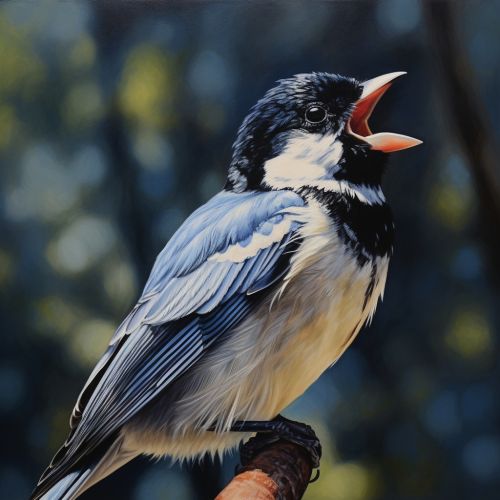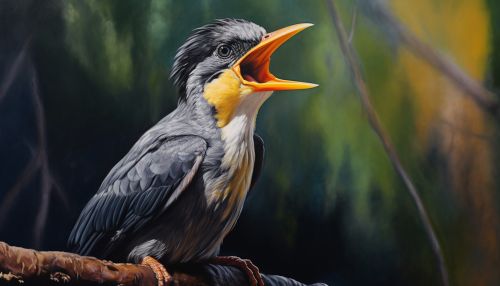Neurobiology of Birdsong
Introduction
The neurobiology of birdsong refers to the study of the neural mechanisms that govern the production and perception of vocal communication in birds. This field of research is of particular interest because birdsong shares many similarities with human speech, including the need for early-life learning and the use of complex vocal sequences.


Neuroanatomy of Birdsong
Birdsong is controlled by a network of discrete brain regions known as the song system. This system is divided into two main pathways: the anterior forebrain pathway (AFP), which is involved in song learning and experimentation, and the posterior motor pathway (PMP), which controls the production of learned song.
Anterior Forebrain Pathway
The AFP is a basal ganglia-thalamocortical loop that plays a key role in the acquisition and modification of birdsong. This pathway begins in the high vocal center (HVC), which sends projections to Area X, a basal ganglia structure. From Area X, signals are sent to the dorsolateral division of the medial thalamus (DLM), and then back to the HVC, forming a closed loop.
Posterior Motor Pathway
The PMP, on the other hand, is responsible for the production of learned song. This pathway also begins in the HVC, but instead sends projections to the robust nucleus of the arcopallium (RA), which in turn projects to brainstem motor nuclei that control the vocal and respiratory muscles.
Neurophysiology of Birdsong
The neurophysiological processes underlying birdsong are complex and involve the coordination of multiple brain regions. During song production, neurons in the HVC fire in precise sequences, with each neuron firing at a specific time during the song. These sequences of neural activity are thought to form a 'neural score' that guides the production of song.


Neuroplasticity and Learning
Just like humans, birds must learn to produce their complex vocalizations. This learning process involves a period of vocal experimentation, known as the sensorimotor phase, during which young birds practice their songs and gradually refine them. This process is guided by auditory feedback and involves the AFP, which allows for the comparison of the bird's own song with a stored template of the 'ideal' song.
Hormonal Regulation of Birdsong
Research has shown that the production and perception of birdsong are influenced by hormones such as testosterone and estrogen. These hormones can affect the size of song control nuclei, the number of neurons and synapses, and the expression of song-related genes.
Clinical Implications
The study of the neurobiology of birdsong has important implications for understanding human speech disorders. For example, research on songbirds has provided insights into the neural basis of stuttering and other speech dysfluencies.
